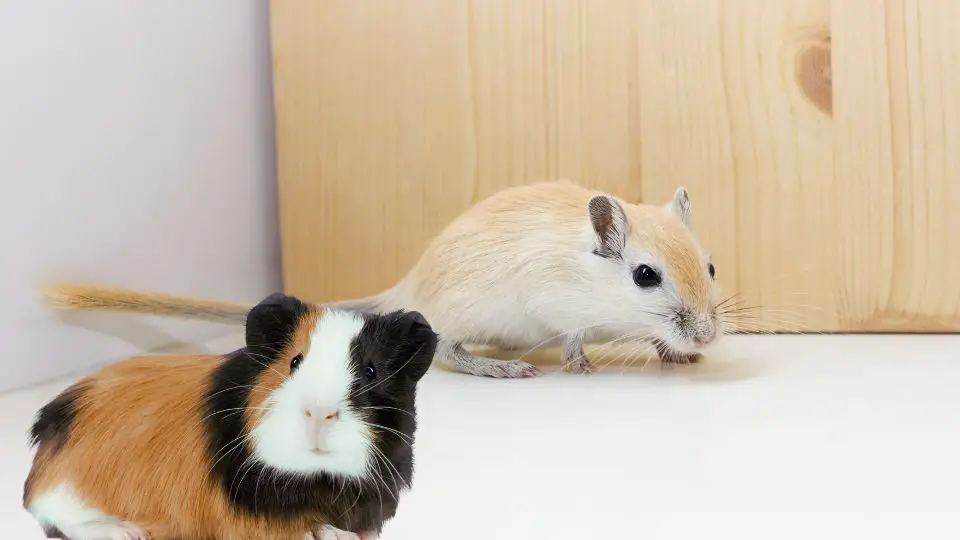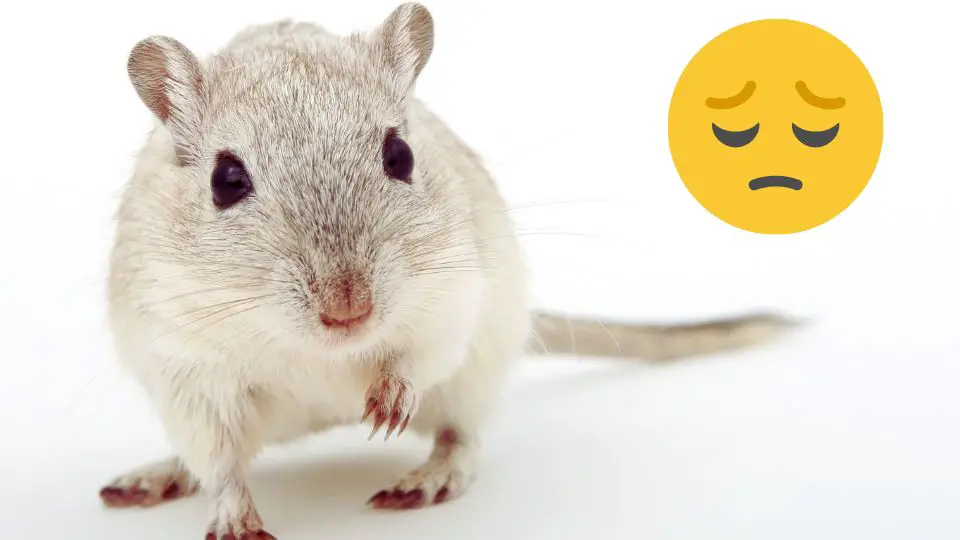Bin cages have become a popular housing option for gerbils due to their affordability and customization possibilities.
Yes, gerbils can live in bin cages. Bin cages can provide a spacious and cost-effective housing option for gerbils. However, you have to ensure that the bin cage meets the gerbils’ needs in terms of size, ventilation, and security.
In this article, we will explore the factors to consider when housing gerbils in bin cages and offer insights into their advantages and limitations.
Are Bin Cages Good for Gerbils?
When it comes to housing gerbils, providing them with a suitable and comfortable environment is essential. One popular option that many gerbil owners consider is using bin cages. These cages are made from plastic storage bins and offer several potential benefits for gerbils.
Bin cages can be a suitable housing option for gerbils, offering several benefits that contribute to their well-being. Here are some reasons why bin cages can be good for gerbils:
- Spaciousness: Bin cages often provide ample room for gerbils to move around, explore, and engage in natural behaviors like burrowing and tunneling. The larger the bin, the more space the gerbils will have to exercise and play.
- Customization: Bin cages can be easily customized to create an enriching environment for gerbils. You can add platforms, tunnels, hides, and various toys to create a stimulating and engaging habitat.
- Ventilation: Good air circulation is important for the health of gerbils. Bin cages typically offer better ventilation compared to some other types of enclosures, allowing fresh air to circulate and preventing the buildup of stale air.
- Cost-effective: Bin cages are often more affordable compared to commercially available gerbil cages. They can be a budget-friendly option, especially for those on a tight budget or looking for a temporary housing solution.
Can Gerbils Chew Through Bin Cages?
Gerbils are known for their chewing behavior, as they have strong teeth that continuously grow. While bin cages are generally sturdy, you should consider the type of plastic used and the thickness of the walls. Some gerbils may be able to chew through certain types of plastic, especially if it is thin or made of a softer material.
To prevent gerbils from chewing through bin cages, there are a few precautions that we recommend:
- Choose a sturdy and durable bin: Opt for bins made of thick, high-density polyethylene (HDPE) or other sturdy plastics. Avoid bins that are made of thin or brittle plastic, as they are more likely to be chewed through.
- Reinforce vulnerable areas: If you notice that your gerbils are showing interest in a particular spot or are starting to chew, reinforce that area with metal mesh or wire mesh. Attach the mesh securely to prevent your gerbils from accessing the plastic.
- Provide appropriate chew toys: Offer a variety of safe and suitable chew toys for your gerbils. This will help redirect their chewing behavior and keep them occupied, reducing the likelihood of them targeting the bin cage.
- Regularly inspect the cage: Check the condition of the bin cage regularly for any signs of damage or weakening. If you notice any areas that have been chewed or compromised, take immediate action to reinforce or repair them.
Considerations for Gerbils in Bin Cages
Bin cages can offer a spacious and customizable housing option for gerbils, but you have to consider a few factors to ensure the well-being of your furry friends. Here are some considerations that we recommend keeping in mind when using bin cages for gerbils:
- Appropriate size and dimensions: Gerbils are active animals that require plenty of space to explore and engage in natural behaviors. Choose a bin that provides sufficient floor space for the gerbils to move around comfortably. The minimum recommended size for a gerbil bin cage is typically around 20 gallons, but larger is always better.
- Suitable bedding and nesting materials: Gerbils love to dig and burrow, so provide them with a deep layer of appropriate bedding material. Aspen shavings or paper-based bedding are good options that allow for digging and nesting. Avoid using cedar or pine shavings, as the strong scent can be harmful to gerbils.
- Secure and escape-proof construction: Gerbils are known to be excellent chewers and escape artists. Ensure that the bin cage is made of sturdy and durable plastic that cannot be easily chewed through. Securely fasten the lid or consider adding mesh covers to prevent any potential escape attempts.
- Limited visibility and potential for boredom: Bin cages may have limited visibility compared to wire cages, which can affect the gerbils’ ability to observe their surroundings. To compensate for this, provide ample enrichment such as tunnels, hides, platforms, and toys to keep them mentally stimulated and engaged.
- Difficulty in attaching accessories and toys: Unlike wire cages that often have built-in attachment points, attaching accessories and toys to a bin cage can be more challenging. Consider using adhesive hooks, zip ties, or other creative solutions to secure items securely and safely within the cage.
Tips for Setting Up a Gerbil’s Bin Cage
Setting up a bin cage for your gerbil can provide a spacious and customizable living environment. To ensure a comfortable and stimulating habitat, consider the following tips when setting up your gerbil’s bin cage:
Select a suitable bin
Choose a bin that is large enough to accommodate your gerbil’s needs. Look for a bin with smooth interior walls to prevent your gerbil from climbing and potentially escaping. Ensure that the bin is made of durable and non-toxic materials.
Add appropriate bedding
Line the bottom of the bin with a layer of suitable bedding material. Aspen shavings or paper-based bedding are good choices as they provide a soft and comfortable surface for your gerbil to burrow and nest in. Avoid using cedar or pine shavings as they can be harmful to gerbils.
Provide enrichment items
Enrichment is essential for your gerbil’s mental and physical well-being. Add items such as tunnels, hides, platforms, and chew toys to stimulate natural behaviors like digging, exploring, and gnawing. Offer a variety of textures, shapes, and sizes to keep your gerbil engaged and entertained.
Create a play area
Reserve a section of the bin cage for a play area where you can place a gerbil-safe exercise wheel or a larger running ball for supervised exercise time. This allows your gerbil to get additional physical activity and burn off excess energy.
Regular maintenance and cleaning
Gerbils are tidy animals, but their living environment still requires regular maintenance. Spot clean the cage by removing any soiled bedding or uneaten food daily. Conduct a thorough cleaning at least once a week, which involves emptying the bin, washing it with mild soap and water, and drying it thoroughly before adding fresh bedding.
FAQ
Is a plastic cage good for gerbils?
Plastic cages can be suitable for gerbils as long as they meet certain criteria. Remember to choose a plastic cage with smooth interior walls to prevent your gerbils from climbing and potentially escaping. Additionally, ensure that the plastic is durable, non-toxic, and resistant to chewing. Regular monitoring of the cage’s condition is necessary to ensure that your gerbils don’t chew through or damage the plastic over time.
What kind of cage is recommended for gerbils?
A glass tank or an aquarium-style enclosure with a secure mesh lid is often recommended for gerbils. These provide a safe and spacious environment for gerbils to burrow, explore, and exhibit their natural behaviors. The tank should have adequate ventilation to ensure good air circulation.
Additionally, wire cages with narrow bar spacing and solid floors can also be suitable for gerbils, as long as the bar spacing is small enough to prevent escape and the flooring does not cause injury to their feet.
Can gerbils live in hamster cages?
While gerbils can technically live in hamster cages, it is generally not recommended. Hamster cages are often designed with different needs and behaviors in mind, and they may not provide the ideal living environment for gerbils. Hamster cages are typically smaller and may not offer enough space for gerbils to exercise and explore.
Additionally, the bar spacing on hamster cages may be too wide, allowing gerbils to escape. It’s best to provide gerbils with a cage specifically designed for their needs, such as a glass tank or a wire cage with appropriate bar spacing.
Conclusion
In conclusion, bin cages can be a viable option for housing gerbils, offering spaciousness, good ventilation, and cost-effectiveness. They allow gerbils to burrow and explore while providing a customizable environment. However, it is crucial to ensure the bin cage meets the gerbils’ needs in terms of size, security, and enrichment.
Regular monitoring, maintenance, and attention to the gerbils’ behavior and well-being are essential to ensure their health and happiness in a bin cage habitat. As responsible gerbil owners, it is our responsibility to provide the best possible living conditions for our furry friends.







